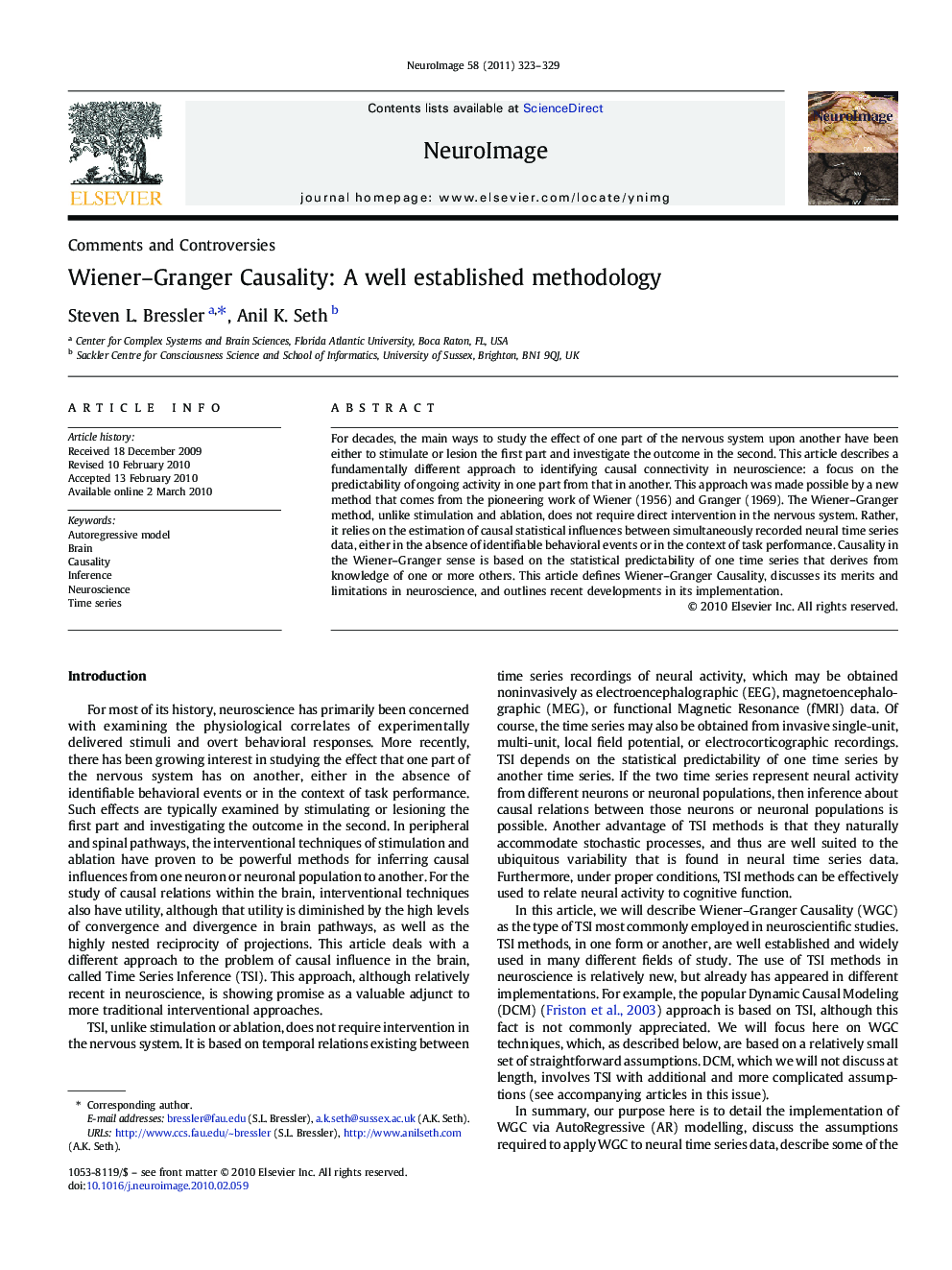| Article ID | Journal | Published Year | Pages | File Type |
|---|---|---|---|---|
| 6034083 | NeuroImage | 2011 | 7 Pages |
Abstract
For decades, the main ways to study the effect of one part of the nervous system upon another have been either to stimulate or lesion the first part and investigate the outcome in the second. This article describes a fundamentally different approach to identifying causal connectivity in neuroscience: a focus on the predictability of ongoing activity in one part from that in another. This approach was made possible by a new method that comes from the pioneering work of Wiener (1956) and Granger (1969). The Wiener-Granger method, unlike stimulation and ablation, does not require direct intervention in the nervous system. Rather, it relies on the estimation of causal statistical influences between simultaneously recorded neural time series data, either in the absence of identifiable behavioral events or in the context of task performance. Causality in the Wiener-Granger sense is based on the statistical predictability of one time series that derives from knowledge of one or more others. This article defines Wiener-Granger Causality, discusses its merits and limitations in neuroscience, and outlines recent developments in its implementation.
Related Topics
Life Sciences
Neuroscience
Cognitive Neuroscience
Authors
Steven L. Bressler, Anil K. Seth,
